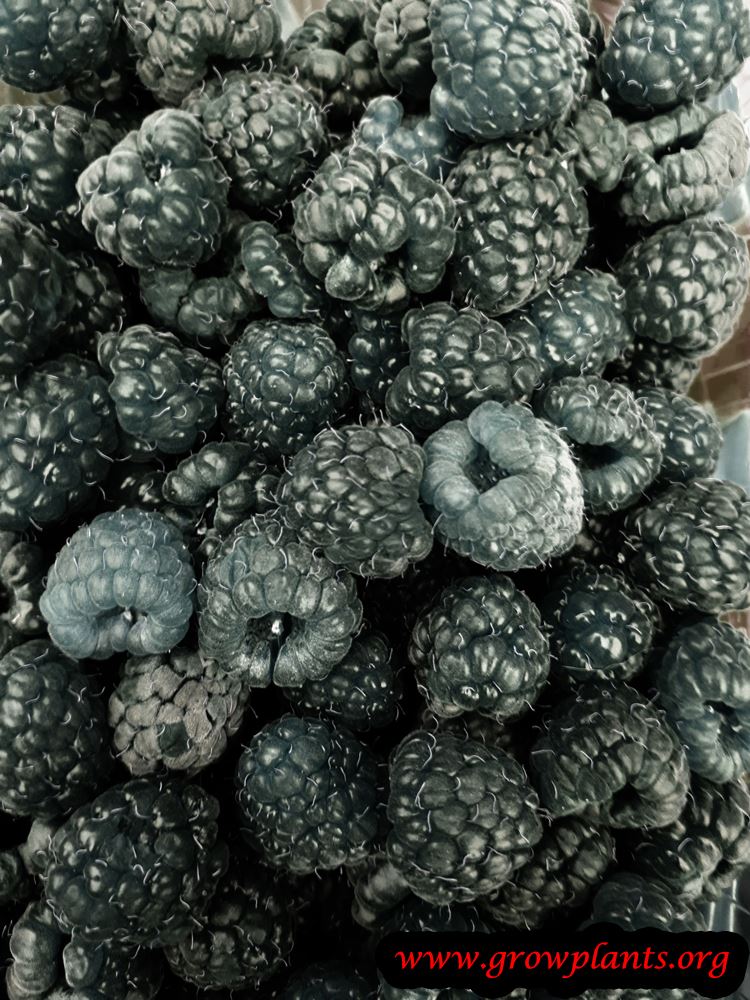
Black raspberry grow and care – shrub of the genus Rubus also known as Raspberry bush or Rubus occidentalis, Black raspberry perennial deciduous plant but the branches are biennial they bearing fruit after two years every year new branches grow and bear fruit after two years, can grow in temperate climate and growing in hardiness zone 3-10a and with the right care in hardiness zone 10b.
Leaves color green, leaves are used in medical uses in beverage.
Flower color white flower 1-3 cm, with 5 petals
Black raspberry edible fruits
Fruit color black, fruit assembled from small cells that put together a round shape (circle / oval), when pick the raspberries fruits the fruits are going out and the torus stay on the branch.
Do not be confuse with Blackberry
Black raspberry for sale – Seeds or Plants to Buy
How to grow Black raspberry growing and care:
Chilling hour’s requirements: for bearing fruits, slight acid soil
How to care:
Fertilize before blooming season, prune once a year
What is the best way to start growing?
Plant /Vegetative Reproduction / Seeds possible but not recommend
Is it necessary to use vegetative reproduction?
Yes recommend
Difficulties or problems when growing:
Can be invasive
Recommended planting season?
Winter, spring, summer
How to plant:
Dig hole bigger than the root ball at least 50-100% bigger, add dead leaves rich soil, organic matter, humus and mix all together and plant it, also recommend to put stick or something to support the plant for trellising
Pests and diseases:
Redberry mite, aphids, cane borer
Pruning season:
Autumn to winter better after the plant go to dormant, for cutting the end of the winter the beginning of the spring
How to prune:
Old branches after bearing fruits should leave something like 5 cm from the ground
Size of the plant:
0.5-3m (2-9 feet), width can be few meters after few years
Growth speed in optimal condition:
Fast growing
Water requirement:
Average amount of water / Big amount of water
Light conditions in optimal condition for growing:
Full Sun / Half Shade
Is it possible to grow indoor as houseplant?
No
How to grow black raspberries indoors:
Not recommend but in order to grow indoor need to put the plant next to a window that will get at list few hours of sun at home
Growing is also possible in a pot / planter /flowerpot / containers:
Yes, start with pot that will be 40-60% more than the root ball, every time that the plant arrive to full capacity need to switch to bigger until arrives to desirable size, switch the soil in mid of the winter, better to use this method because the soil lose the viability over time and it’s efficient care for the soil, need average amount of water with good drainage better water with less minerals, in order to keep the soil moist better to put mulch of pines, peat soil or other acid soil with humus and a lot of organic matter and in pot of 15 liter better to keep 2 full mature plants and 1 or 2 daughter plants for next year.
Blooming information
Bloom season:
Spring – Summer
General information about the flower
White flower 1-3 cm, with 5 petals
Pollination is done by:
Bees and more pollinators
Edible Fruit
Fruit harvest season:
Summer – Autumn
Fruits pests or diseases:
Birds
What can be done with big quantities of Black raspberry fruits?
Eaten raw, cake, cooked, juice
Work requirements on the fruit:
When the birds eat most of the fruit recommend to cover with a net
How long does it take to bear fruit?
2 years
Subspecies
Royalty Black raspberry – sometimes can be mild, is sweet, average size
Vegetative Reproduction
Vegetative Reproduction Method:
Cutting, basal shoots (Suckers)
Preferred time for vegetative reproduction:
Spring
Time to grow roots in vegetative reproduction:
1-3 weeks
Treatment for vegetative reproduction:
Suckers – Separate gently from the mother plant, cutting – moist soil and little shade, high humidity
Edible leaves
Leaves harvesting season:
Spring / Summer
How to harvest the leaves?
From the base of the leaf, not recommend to trim next to fruits
Information about leaves:
Ovate leaves in the edge serrate, the leaves grow in groups 3-5 leaves
Uses of Black raspberry leaves:
Beverage, medical
How to grow Black raspberry from seeds
Sowing requirement:
High humidity, full sun to half shade, moist soil
Saving seeds and care until sowing:
Dry and dark place better in refrigerator
Sowing season:
End of the winter to spring and better to grow in winter indoor in hardiness zone 10b
How to plant:
Planting in vermiculite, peat soil or other plant
Planting spacing:
3*4cm (1.2*1.8 inches) when transplant it better to sow them in different pots it’s easier to follow in control and care for the seedling
Depth of Sowing:
Better not to cover just to put on the soil
Conditions for seeds germinate:
High humidity, moist soil, full sun, consider when grow in pots to cover with plastic wrap
Watering requires for Seeds:
Average amount of water / Big amount of water
Germination time:
2-4 months
Condition of seedling:
Full sun, protect the seedling from pests, winds and heavy snow
Do the seeds require burying?
Yes
Chilling hour’s requirements:
2-3 month
Scientific name:
Rubus occidentalis
Alternative names: Black raspberries
Categories
| Blooming Seasons |
|
|---|---|
| Edible Parts |
|
| Culinary uses |
|
| Flower colors |
|
| Climate |
|
| Harvest Season |
|
| Plant growing speed |
|
| Plant life-form |
|
| Plant Uses |
|
| Planting Season |
|
| Plants sun exposure |
|
| Watering plants |
|
| Hardiness zone |
|



